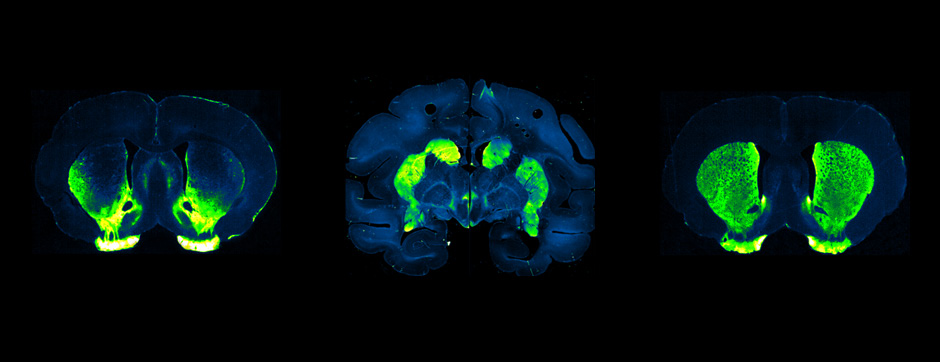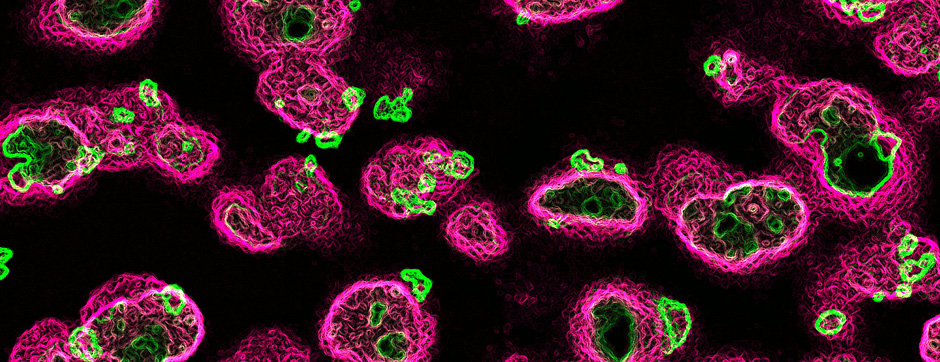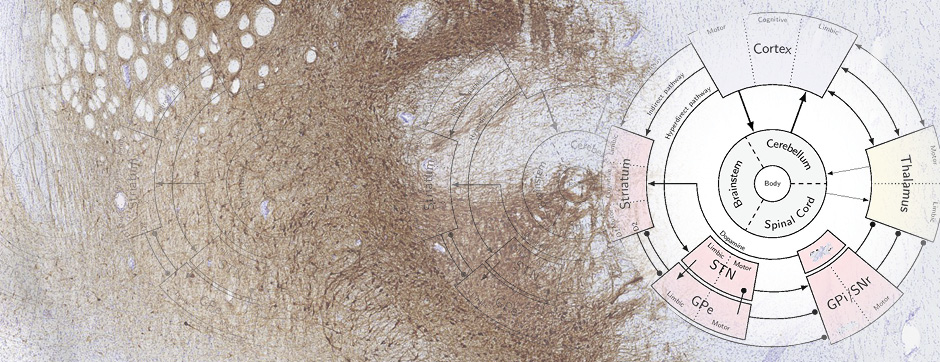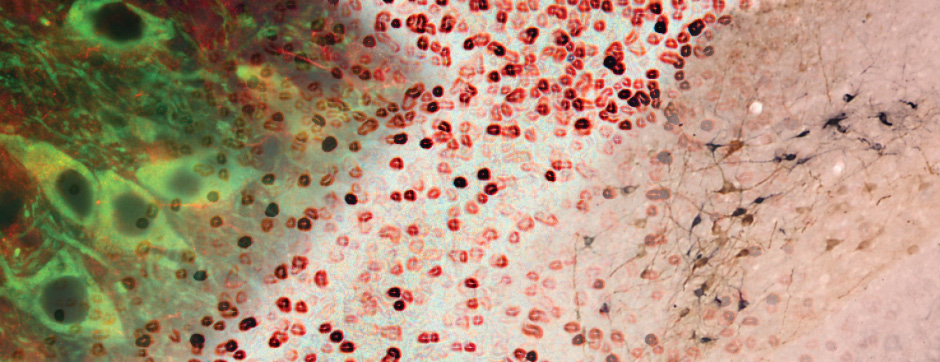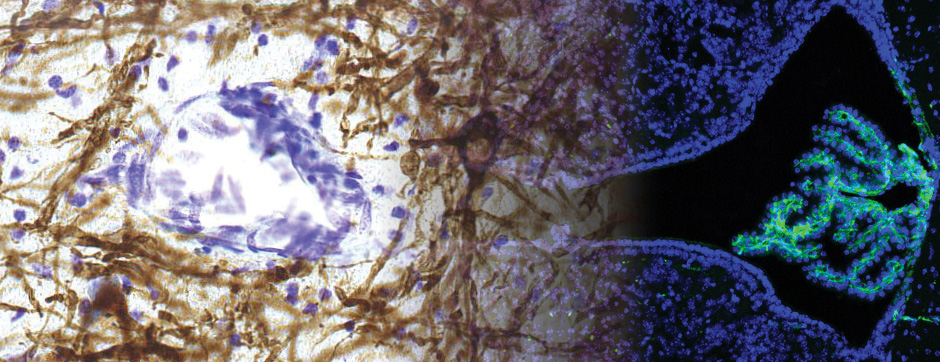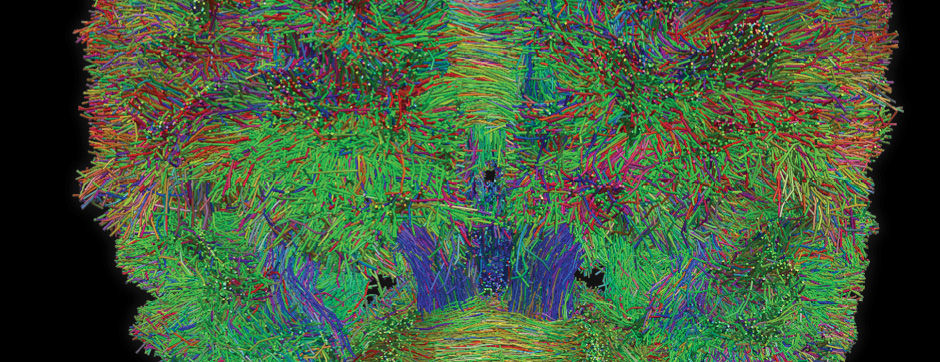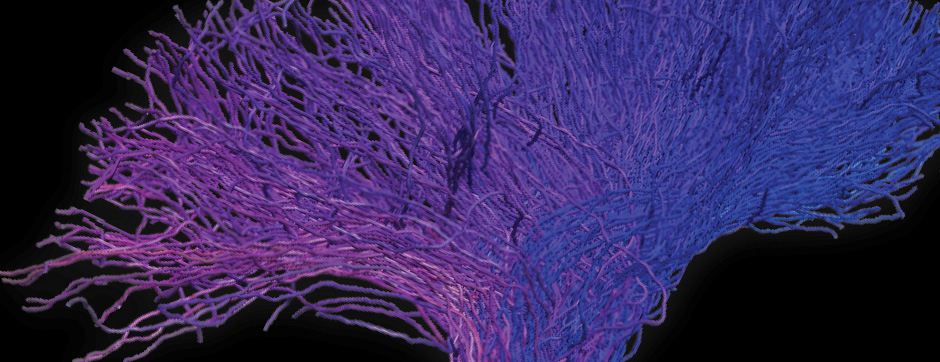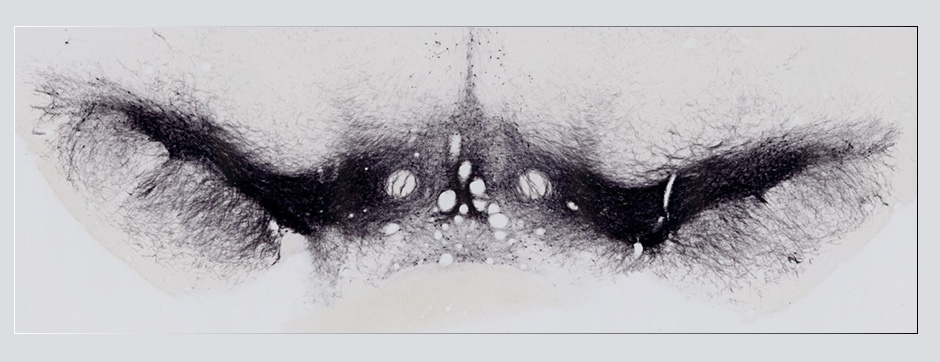
Zoé Grivet
Involvement of serotonergic descending pathways in the control of nociception in Parkinson disease
novembre 2023 Directeur(s) de thèse : Pascal Fossat Résumé de thèseParkinson disease (PD) is a multi-factory disorder leading to motor but also to non-motor symptoms, associated with dopamine (DA) depletion in basal ganglia. One of the major non-motor symptom is chronic pain whose underlying mechanisms are still largely unknown. Beyond DA, it is also known that other monoaminergic systems such as serotonergic (5-HT) are altered in PD. Moreover, 5-HT descending neurons projecting from the nucleus raphe magnus (NRM) to the dorsal horn of the spinal cord (DHSC) exert an important pain modulation. Thus, we hypothesized that chronic pain in PD is associated to a perturbation of pain control by 5-HT descending pathways. To test this, we used the 6-OHDA mouse model of PD that kill over 90% of DA neurons in the SNc. Depletion of DA neurons led to decreased bilateral mechanical pain thresholds and increased nociceptive activity in the dorsal horn of the spinal cord (DHSC) notably by inducing a hyperactivity of spinal nociceptive neurons. Additionally, we found an increased activity of 5-HT neurons of the nucleus raphe magnus, an increased barrage of excitatory inputs on these neurons and raised 5-HT levels in the spinal cord compared to sham animals. To verify that the observed hypersensitivity in 6-OHDA mice was directly linked to the increased 5-HT activity, we used transgenic mice expressing cre-recombinase in 5-HT neurons, allowing specific expression of light-dependent inhibitory opsins. Inhibition of the 5-HT-spinal cord pathway partially restored pain sensitivity in 6-OHDA animals and reduced nociceptive activity in the DHSC. This partial recovery could be mimicked by intrathecal injection of 5-HT2a and 5-HT3 receptor antagonists. These results show that DA depletion is associated to increase 5-HT neuron activity in the NRM that mediate spinal hyperexcitability associated to nociceptive hypersensitivity. These results show a 5-HT facilitatory pathway after DA depletion. In contrast, previously, in naive mice we showed a 5-HT descending pain inhibition suggesting that the role of serotonin in nociceptive control change upon 5-HT neurons activity. To test for that hypothesis, we thus investigated the role of the level of stimulation of the 5-HT descending pathway on nociceptive response and dorsal horn neurons excitability. We show that contrary to DA depletion, inhibition of 5-HT pathways reduced paw withdrawal thresholds and increased nociceptive neuron activity in the DHSC, demonstrating a tonic anti-nociceptive role of the 5-HT pathway under normal conditions. Next, we activated 5-HT descending pathways using different optogenetic and chemogenetic protocols of stimulation. We confirmed with optogenetic that short-term stimulation of 5-HT neuron is analgesic while longer stimulation are proalgesic. Chemogenetic experiments also suggest different DCZ concentrations also lead to opposite pain control but experiments need to be consolidated. However, all these results support the hypothesis that the activity level of 5-HT neurons controls their effect on nociceptive transmission from antinociceptive at low level to pronociceptive at higher levels. We finally address the question of the spinal 5-HT receptors involved and we show that analgesic effect is associated to activation of local inhibitory interneurons expressing 5-HT2a and c receptors while hyperalgesic effect of high level of activity need the recruitment of 5-HT3 receptors.
In conclusion, this work demonstrates that (1) the level of activity of 5-HT neurons is a crucial indicator of serotonergic control of pain going from analgesia to hyperalgesia, and that (2) the loss of DA neurons in PD leads to increased activity of 5-HT descending pathway, resulting in a spinal 5-HT2a/5-HT3 dependent nociceptive hypersensitivity in mice. Lastly, it opens avenues for exploring the use of serotonin antagonists in the potential treatment of chronic pain in Parkinson’s disease and the use 5-HT neurons activity as an indicator of pathological pain.


